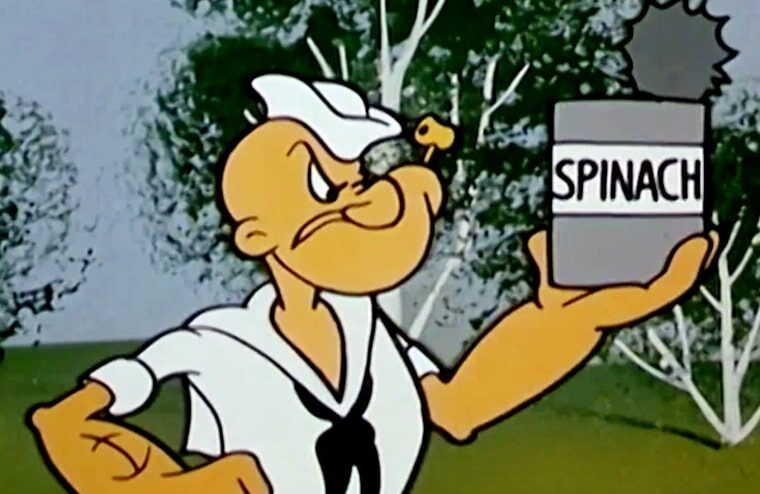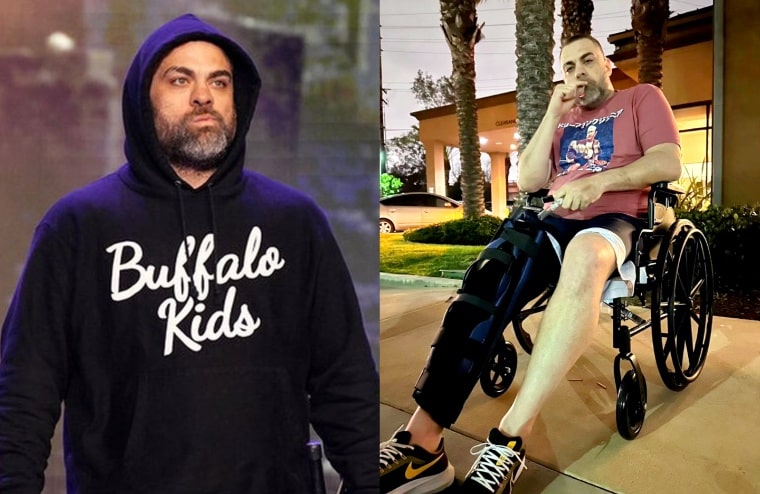In 1938, Jerry Siegel and Joe Shuster created Superman, the Man of Steel (not to be confused with Joseph Stalin). Most experts will tell you that Superman’s debut in Action Comics #1 was the beginning of the superhero genre as we know it. With all due respect to the comic scholars and pop culture enthusiasts who perpetuate that belief, I’d say that the first American superhero debuted in comics nine years before Clark Kent ever stepped into a phone booth. With strength beyond the comprehension of normal men and powers that defy reality itself, the first great champion of Truth, Justice, and the American Way was… Popeye the Sailor Man.
That shouldn’t be surprising to those who read the title of this article, but Popeye doesn’t often come up in discussions about superheroes. The mush-mouthed mariner is primarily known as a comedic figure, so his exclusion is understandable. However, the joke isn’t that Popeye is weak or ineffective. The joke is that Popeye is impossibly powerful. Even within a cartoon world, Popeye’s feats are eye-popping. He can knock a man around the world, send a punch through a radio wire, shapeshift into an octopus, and perform more miracles than Miracleman. Best of all, Popeye uses these extraordinary abilities in the name of good. Nearly every story involves Popeye standing up to bullies and protecting the innocent. Heck, he even has his own Lex Luthor and Lois Lane in Bluto and Olive Oyl.
Like Superman, Popeye was first brought to life in the panels of a comic. Cartoonist Elzie Crisler Segar created the comic strip Thimble Theater in 1919 for the New York Journal. It was a parody of movie melodramas that starred Ham Gravy and his plucky girlfriend, Olive Oyl. Popeye was not the main character. In fact, for the first decade of Thimble Theater’s run, Popeye didn’t even exist. Though initially a gag-a-day strip, Thimble Theater became a sort of comedic adventure series. In one arc, Ham Gravy and Castor Oyl (Olive’s brother) hire Popeye to sail a ship. The sailor was supposed to appear in that one adventure and leave. Except he didn’t. Popeye was so popular, he almost immediately became the star. By 1930, Olive Oyl began dating Popeye, leaving Ham Gravy. Ham Gravy himself left the strip he once headlined a few weeks later. No one has ever been dumped harder.
Popeye himself was based on a fellow named Frank “Rocky” Fiegel from E. C. Segar’s hometown of Chester, Illinois. Rocky was a local legend, known for his incredible might and mangled English. One story goes that a bunch of hoodlums lured Rocky into the woods with the intent of beating and robbing him. Rocky left the woods unscathed; the hoodlums needed medical attention. Rocky often got into fights and always emerged the winner. Though Rocky was the quintessential tough guy, he was great with kids and had a heart of gold. There are tales of Rocky using his considerable strength to stand up for those in danger. To the denizens of Chester, he was something of a superhero. It’s not hard to picture Popeye when reading accounts of Rocky’s exploits. There are two primary differences between Popeye and the man who inspired him: Rocky wasn’t a sailor and he preferred booze to spinach.
There wasn’t a newspaper reader during the Great Depression who did not know the name of Popeye. However, animation had surpassed comic strips in popularity at that point. Mickey Mouse was the biggest star in cartoons. In 1932, King Features (the company that owned Popeye) made a deal with the Fleischer Brothers (known for their Betty Boop shorts) to produce a series of Popeye cartoons. The first Popeye short was actually a 1933 Betty Boop film aptly named “Popeye the Sailor.” It begins by announcing Popeye as a movie star, which he certainly became. What’s remarkable about “Popeye the Sailor” is how quickly it establishes the Popeye cartoon formula: The brutish Bluto kidnaps Popeye’s girlfriend Olive Oyl, Bluto gets the upper hand, but Popeye ultimately wins by eating spinach. Within one cartoon, the Fleischers perfectly nail the humor, story, and rhythm of their soon-to-be massive Popeye series. My personal favorite gag is when Popeye punches Bluto and the tree he’s holding so hard, a coffin starts building itself around Bluto. It’s not as funny when you type it out, but it’s the sort of surreal slapstick that only a Popeye cartoon can pull off.
The already popular Popeye became an even bigger sensation in animation than he was in newspaper. By 1938, polls showed that Popeye was Hollywood’s most popular cartoon star, dethroning Mickey Mouse. Co-stars like Olive Oyl and lovable moocher Wimpy also became pop culture icons. What also enjoyed a surge in popularity is spinach, the leafy vegetable reviled by children everywhere. Segar occasionally used spinach in his strip, but the Fleischer made it the essential force that gives Popeye his unfathomable abilities. In 1934, the consumption of spinach went up 33% because of Popeye. It was briefly the most popular food among kids, behind only turkey and ice cream. Even Spider-Man couldn’t get children to eat their vegetables.
Popeye is largely appealing as a hero because he wasn’t the typical hero. He was gruff, smoked a pipe, and spoke a fractured English that’s almost its own language. Most superheroes are conventionally handsome; Popeye is a weird-looking older guy whose eye was presumably closed as the result of fighting. While Batman lives in a mansion and Superman has access to the Fortress of Solitude, Popeye usually lived in rooming houses or dilapidated apartments. As a character who became popular during the Depression, Popeye is almost always depicted as a blue collar guy with very little money to his name. Popeye had no mild-mannered alter ego because Popeye is the common man. Despite his great strength, he was an average Joe who always sided with the underdog.
Whenever there was a bully to face, Popeye would be there. Like all the great superheroes, Popeye always fought for what’s right. If Bluto harassed Olive Oyl, Popeye would punch him silly. If a kid was being picked on, Popeye would help them out. While some depictions of his heroism are questionable (the World War II cartoons), the fact is that Popeye was always meant to represent everything that’s good in the world. He’s the one of the few characters who’s as moral as Batman and as funny as The Joker.
Fleischer would go on to produce their own Superman cartoons, making the path from Popeye to Superman clear. Supes popularized the concept of a comic hero, but Popeye proved the idea had merit years before. Popeye was likely the first American superhero, though his kind has existed for centuries. Before Popeye and Superman, there was Odysseus and Hercules. We have always needed superheroes, in all shapes and forms. Until the introduction of Superman, the superhero America needed was a scruffy sailor who mumbled under his breath. He’s strong to the finich, ’cause he eats his spinach. He’s Popeye the Sailor Man.
- The Phibes Philes: Space Ghost – The Hero Before The Host - May 1, 2024
- The Phibes Philes: Kongfrontation – Some Thoughts On King Kong Escapes - March 29, 2024
- The Phibes Philes: Robby The Robot –Hollywood’s Automaton Actor - February 29, 2024




